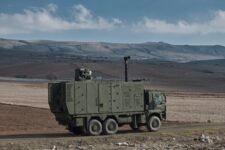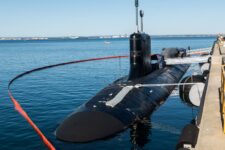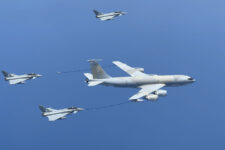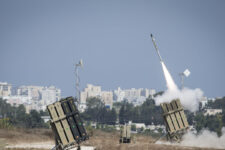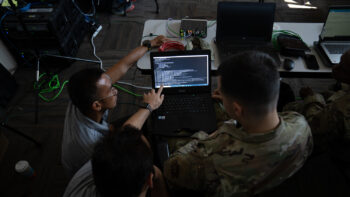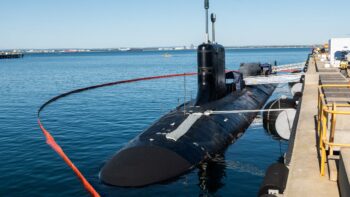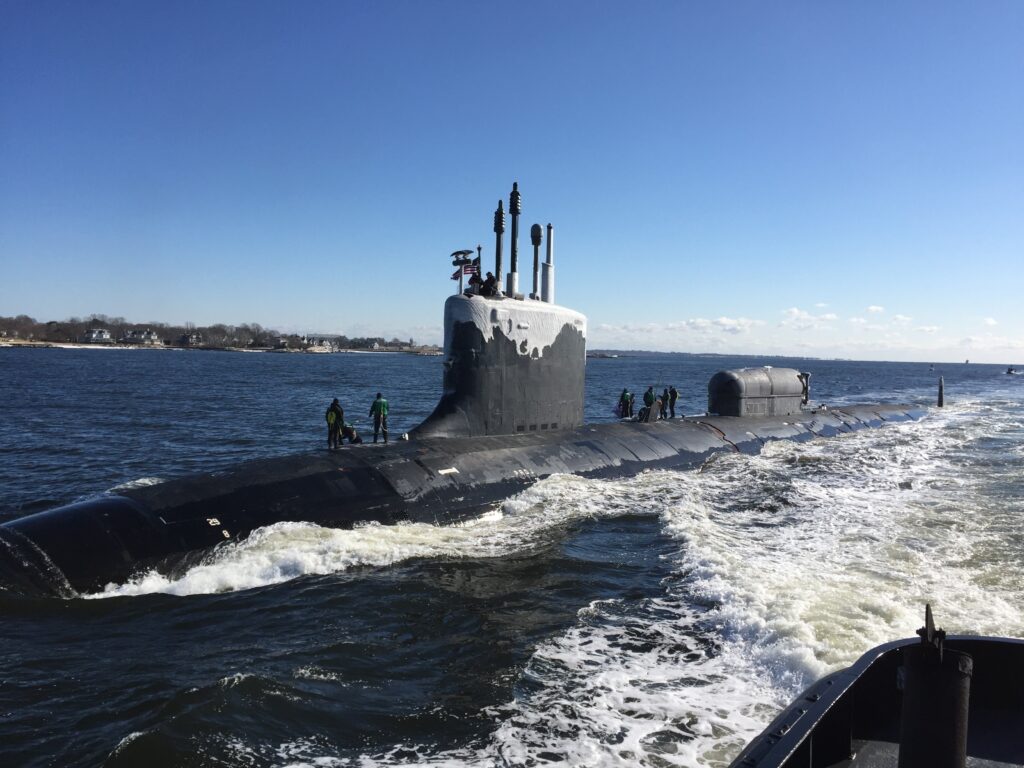
Virginia-class, nuclear-powered USS North Dakota .
WASHINGTON: The Navy plans to test its developmental hypersonic missile from a submarine by the mid-2020s, and is pushing the burgeoning program through a series of static tests this year to demonstrate technologies as it gears up to equipping its Virginia-class submarines with the weapon.
“Our goal is to have an early capability in the mid ‘20s,” said Vice Adm. Johnny Wolfe, director of the Navy’s Strategic Systems Programs. “We’re trying to take a methodical approach to this, as we work through this to make sure we get it right.”
The weapon is being developed through a unique partnership between the Navy and Army, in which the Army buys the glide body for both services, while the Navy buys the rocket booster. After rounds of joint tests, like the successful launch last month, each service will customize the missile for its own particular needs: the Army plans to field a battery of four truck-borne launchers in 2023 while the Navy will take a few more years to work out the more complicated design specifications of a sea-launched version set to fly from Virginia-class submarines.
Late last month, the two services launched their Common Hypersonic Glide Body from the Pacific Missile Range in Hawaii. It was the second successful test of the C-HGB, about a year-and-a-half after the first test in October 2017.
For the rest of this year, the Navy is doubling down on its boosters, conducting a series of static fire tests to collect data before another test firing. “We’ve been crawling. Now we’re starting to walk where we’re going to get the booster design done — we’re going to static test this year — and then we will start to truly, truly run,” Wolfe said.
In the fiscal 2021 budget request, the Navy asked for $1 billion to fund work on the Conventional Prompt Strike program. Budget documents said the program will “enable precise and timely strike capability in contested environments across surface and sub-surface platforms.” It targeted fiscal 2028 for fielding on a Virginia-class submarine with Virginia Payload Module.
Placing the weapon on Virginia subs would allow the US to strike any target anywhere on the planet within minutes, giving the Navy an unprecedented quick-strike punch that would help in contested environments around the first island chain in the Pacific, where the Chinese buildup has most concerned the US and its allies.
The Virginia Payload Module gives the submarines space for 28 additional missile tubes, for a total of 40 missiles per boat. The additional missile tubes will help the Navy fill part of the gap that will be left when the four Ohio-class guided-missile submarines begin leaving the fleet in the mid-2020s.
A major element of what the Navy and Army team is working to include in the program is the ability to change, and be launched from different platforms.
Asked if the missile would be capable of being launched from surface ships as well as submarines, Wolfe said there’s no program of record for that currently, “but I know there’s been a lot of interest in that. Everything that we do, everything that we think of, is ‘how do we design, develop and produce this once, but use on many, many various platforms?’ So that’s in our thoughts with everything that we do. So whether it’s a submarine, whether it’s a surface ship, whether it’s an Army system, we put that requirement in place to make sure that we don’t preclude any potential possibility.”
Italy’s Leonardo forecasts $6.6 billion ‘upside’ from new wave of European defense spending
To deal with the changing geopolitical landscape, Cingolani called for “stronger alliances” and “industrial synergies.”

